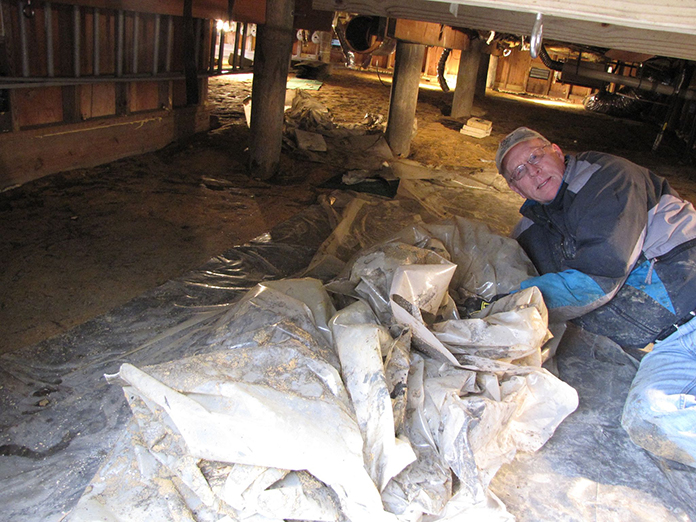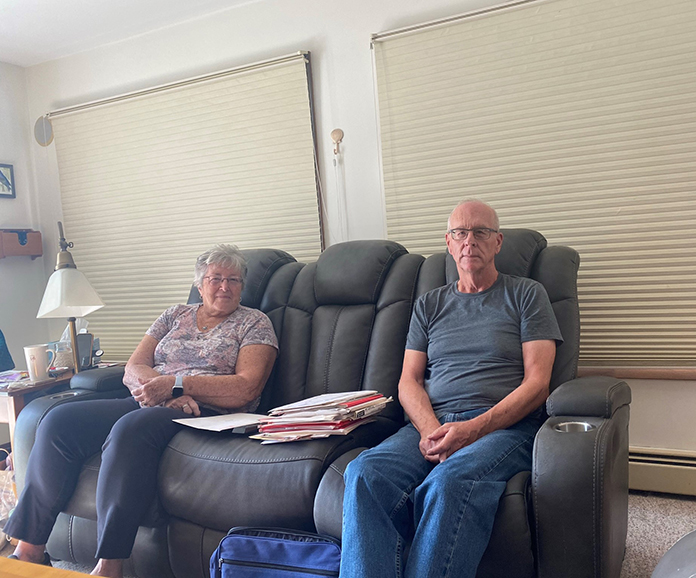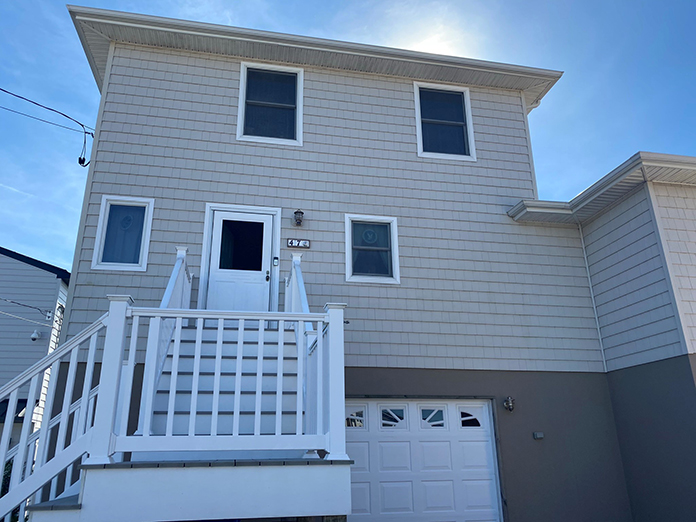
STAFFORD – Several iconic photographs serve as a remembrance of Superstorm Sandy’s wrath nearly a decade ago. Meanwhile, some victims suffered damage not overtly visible from the exteriors of their homes.
“If you looked from the outside of our house, you didn’t see much,” shared Joseph Golding of Beach Haven West. “A lot of us were upset because the news kept showing the ferris wheel further north that went into the water. That didn’t affect people in their normal lives.”
Joseph and Pamela Golding bought their current home in Beach Haven West in 2000. Like most in the area, their house sits on a lagoon. The couple didn’t take any chances when news of the impending storm broke out and followed directions to evacuate.
The Goldings considered themselves lucky as they were able to land a room at the Holiday Inn, just miles away on Route 72 in Manahawkin. As the couple later learned, several guests who planned on attending a wedding scheduled at the hotel canceled because of the storm.
After they settled in their room, the Goldings went downstairs. Children were among those gathered in the common area.

“Pam and I heard some music coming from the dining area, and a little girl said someone was getting married,” Joe recalled. “When we walked over out of curiosity, the bride and groom said they paid for everything and didn’t have very many people there. So they asked us to come in and join them.”
While the Goldings didn’t join in the festivities, they were grateful for the invitation. The couple stayed at the hotel for a few days before returning to check out the storm’s damage to their home.
Ferocious winds had lifted the heavy-duty fish cleaning stand from its dockside location and tossed it on its side. Tools kept in an outside shed were completely destroyed. However, it wasn’t until Joe and Pam went inside that they realized the damage outside was the least of their problems.
“We had a crawlspace underneath that was probably about two and a half feet,” said Pam. “It was completely flooded.”
As a result of the water damage, all of the ductwork for the home’s air conditioning units needed to be removed. Much of the electrical system required replacement, as did the insulation in the crawlspace. While the water never reached the living area of the house, the home became inhabitable.
Joe recalled seeing boats in people’s yards and referred to the sights as traumatic. And, while Joe said most of the houses nearby survived, they suffered a ton of damage.
“Most of the homes around here were small houses back then,” Joe shared. “There’s very few of them left.”
According to FEMA recommendations, elevating houses acts as a protective measure against destructive floods. The Goldings joined many of their neighbors in raising their home. The recovery process created multiple challenges along the way.
First, was finding a place to live during the six months the Goldings were displaced from their home. Fortunately, nearby friends took the couple in and allowed them to stay with them.

“We were in our 60s at the time, and had paid our mortgage off,” said Joe. “We were told we would not get rental assistance since we didn’t have a mortgage.”
Next came the tasks associated with dealing with several aspects of bureaucracy. On the one hand, it was ensuring that bills submitted complied with regulations. On the other, it was meeting requirements that would ultimately result in a certificate of occupancy.
Meanwhile, there was also the issue of finding reputable contractors to make repairs and perform the house elevation. Just about everyone was raising their houses, and the couple literally got lucky when they found someone from out of state to do their work.
A grant award through the New Jersey Reconstruction, Rehabilitation, Elevation and Mitigation (RREM) Program paid for the work done to the Goldings’ home. However, years later, the state claims they overpaid the couple.
According to a letter the Goldings received from the Department of Community of Affairs, Sandy Recovery Division, the Goldings owe the state nearly $11,000 in reimbursement. The state has also placed a lien of the couple’s home.

“The state is saying they paid the Goldings too much for the job, even though they were eligible for up to $150,000,” explained Jody Stewart of the New Jersey Organizing Project, who continues to advocate for Sandy survivors. “They are saying they over dispersed money without showing proof.”
The repayment of the monies are on hold for now, as advocates fight to eliminate clawbacks on other government funds dispersed because of Sandy. In the meantime, the 75-year-old couple has a concern.
“How do we get the lien removed from our house in the end?” Joe asked.






